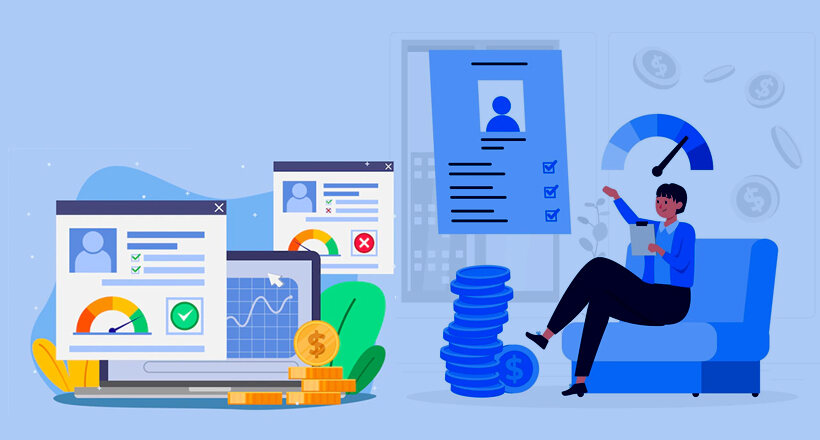The common business risks include credit risk which mainly refers to the risk of the borrowers failing to repay credit or loan that has been extended to them, customers failing to pay the invoices raised against the supply of goods or services, or vendors failing to supply goods or services after having been paid in time. The impact of credit risk gets wider and more complex for global enterprises because of the peculiarities and nuances of each region in terms of its behavior, corporate culture and governance styles, the local legal systems, and the country’s economic conditions, among other things.
Businesses, to manage and minimize credit risks, have to get hold of a lot of relevant information about the stakeholders – the customer or vendor or borrower, as the case may be – even before onboarding them and then analyze the information, to fetch valuable insights or give early warnings during the onboarding process and continued business relationship. In other words, credit risk mitigation strategies of businesses must ensure that they only do business with organizations that are trustworthy, financially sound, and creditworthy.
Key Takeaways:
- Credit Risk management is critical for the survival and growth of businesses as a few defaults can kill the company
- The traditional manual and paper-based credit risk management and monitoring processing is no more workable for the current business environment
- Digital Technology adoption, particularly of emerging technologies like AI, ML, NLP, and D&A, is transforming the way credit risks are managed to bring efficiency and speed into the process
The Purpose and Process of Credit Risk Management
While each organization has its own credit risk mitigation processes and policies, the basic framework includes gathering and processing the credit history of the company whether they repay their loans and credits or pay invoices on time, or complete timely delivery of orders, all as per agreed terms. It may also include an analysis of the credit histories of business owners and other key personnel or stakeholders and as well reviewing various ratios and metrics of the company under review to ensure it enjoys capital adequacy and financial health to meet its existing and proposed short and long-term liabilities.
The other factors that businesses review as part of credit risk management are to look at the availability of assets that can be provided as collateral if required and the risks involved in considering those assets as collaterals. It is not only about the insights into the company, but also the macroeconomic factors like inflation, unemployment, GDP, and overall economic condition and the current and future prospects of the industry the credit seeker is in. The processes of Know Your Customer (KYC) and anti-money laundering (AML) monitoring provide better clarity about the risk level of your client or vendor and flag the changes in their status or profile for further review and analysis.
Digital Technology to Empower Credit Risk Management
The traditional credit risk management process which is highly human-driven, in-person, and paper-based is no more sufficient for monitoring and mitigating credit risks in the current world. The adoption of technology such as blockchain, API, data, analytics, and AI including machine learning (ML), can help eliminate the inefficiency, inaccuracies, and chances of friction, error, and tampering pertinent in a traditional credit risk management methodology by enhancing and automating the process. The technology facilitates the faster collection and processing of information and data by filtering and extracting the relevant data needed for the onboarding process and improving business relationships through the elimination of the hassle and friction involved in traditional methods.
Machine learning (ML) which is part of AI technology enables enterprises and financial institutions to predict the probability of payment default, by leveraging traditional and alternative data including unstructured data. The AI and ML-driven applications update dynamically the data sourced from various internal and external sources thus providing contextual information to facilitate making intelligent and informed decisions during onboarding and as well in constant monitoring during the ongoing business relationships.
A case study by Deloitte talks about how the new technology allows businesses to overcome the limitations of traditional models that are not capable of capturing complex relationships from the data and making predictions. AI algorithms are capable of giving early and accurate warning signals using highly accurate data from a wide range of sources along with the use of natural language processing (NLP) that can capture data and information from media and social media posts.
Skip Technology Adoption in Credit Risk Management at Your Risk
Credit risk management is critical for the financial stability, sustenance, and growth of every company because a few payment defaults can lead a company to trouble and even fold. Traditional systems don’t have the capability to manage, monitor, and predict credit risks in an environment that is highly digitally transformed. You need a robust technology solution that can strengthen your credit risk management protocol and the related OTC processes, particularly if you are a large global enterprise that has to manage a diverse and large variety of credit risks. Don’t miss the case studies of how the Emagia Credit Risk Management solution changed credit management processes at Cali Bamboos and the American Heart Association.








